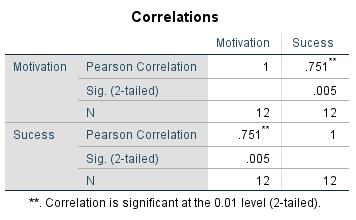

In this case formulating the hypotheses raises the question about the correlation between “Success” and “Motivation.” While it can be assumed that a person’s motivation is the cause of his or success at work, the opposite may apply as well: success at work can equally be the source of motivation.

To test the research question statistically, it is necessary to formulate hypotheses. The purpose of the inquiry is to find out if a person’s motivation and success at work are somehow related.

Is there a correlation between motivation and success? The research question can be formulated as follows: Both variables can thus be interpreted as being interval scaled.
#PEARSON CORRELATION SPSS PROFESSIONAL#
salary, rate of promotion, etc.) were used for compiling an index with values ranging between 0 and 100 for gauging a person’s professional success. Furthermore, various measured values (e.g. The resulting motivation index can assume values between 0 and 20. The steps for calculating a bivariate correlation can be explained based on a question taken from the field of human resources.ĭata about a person’s motivation level is obtained through a standardized test that was conducted during a research project. The correlation analysis is suitable for questions that examine a correlation between two attributes, such as “Is there a correlation between age and political orientation?” or “Do working hours and income correlate?” 2. A correlation analysis should be chosen over a simple linear regression analysis whenever the assumed direction of the correlation cannot be determined. Because this involves two variables, the term “bivariate correlation” is used. A correlation analysis provides information about a statistical correlation between two interval scaled attributes (LINK to scale levels).


 0 kommentar(er)
0 kommentar(er)
